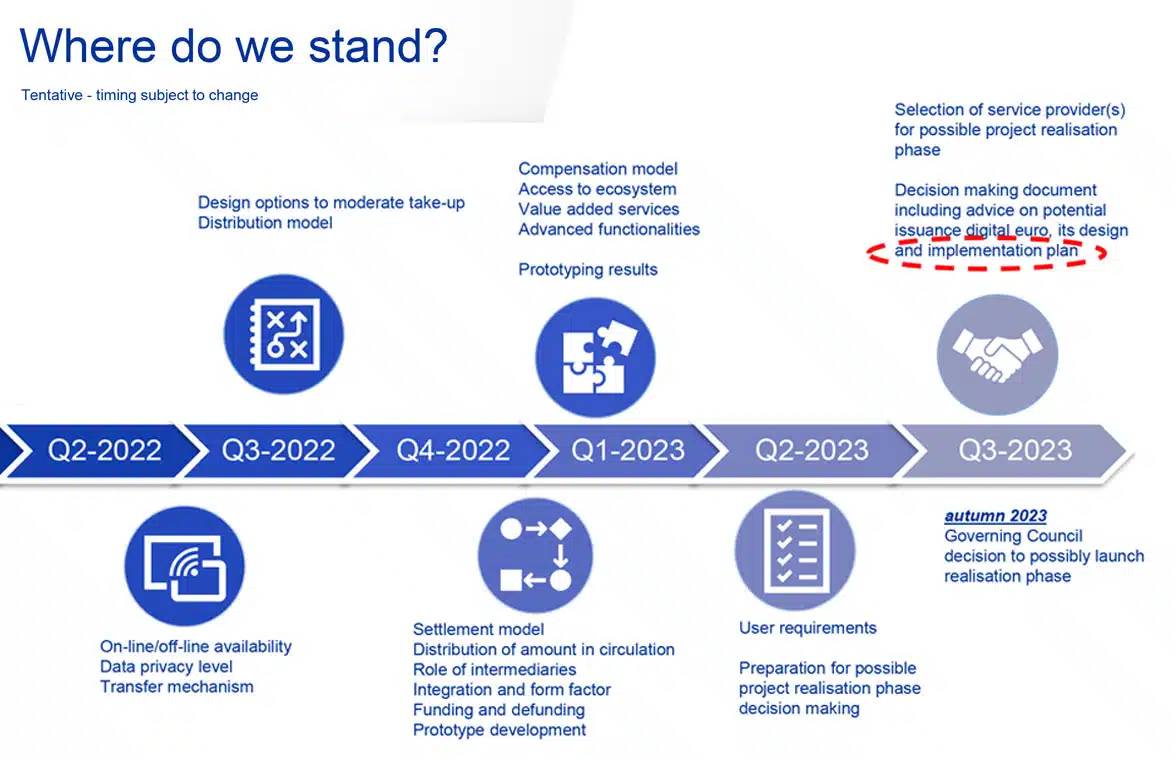
The European Central Bank (ECB) has laid out plans for a staggered rollout of a digital euro that would begin with the bank initially releasing the central bank digital currency (CBDC) for use in person-to-person and ecommerce transactions.
The bank would then add support for on- and offline digital euro payments at the point of sale and person- or business-to-government payments including taxes and custom duties as well as any other remaining use cases, according to an ECB presentation published online.
“Multiple use cases are required to address the variety of end-user needs and market gaps across EA countries, responding to a landscape with diverse payment behaviours and preferences,” the presentation says.
“This could be achieved by offering a sufficiently broad and impactful set of use cases from the start (vs a single-use case).
“In practical terms, a staggered approach would contribute to: ensuring a smooth end-user payment experience (ie gradual understanding and adoption of the different use cases and technologies by end-users; reduce the implementation complexities associated (eg rolling out at pan-EA level).”
The two potential realisation phases of the digital euro launch will run in parallel in order to “optimise the release path”, with each release “preceded by a piloting exercise to prove design decisions”, the presentation adds.
Compensation model
In a separate document the ECB also confirms that it is developing a “compensation model” for the production and issuance of a digital euro based on four core principles:
- Free basic use by private individuals covering “all services necessary to enable persons to pay and be paid with digital euro in a convenient manner”.
- Network effects generating economic incentives for acquirers and merchants.
- Comparable economic incentives for issuers to “ensure an effective distribution of a public good like the digital euro”.
- The Eurosystem bearing its own costs as it does with the production of issuance of physical banknotes.
“The digital euro is a public good. It should be widely available and usable anywhere in the euro area to make and receive payments,” the ECB says.
“This needs establishing an appropriate combination of requirements and economic incentives, providing confidence that network effects will be achieved.”
The central bank now plans to carry out further work on the details of the rollout approach with a view to presenting the implementation plan for the potential realisation phase of the digital euro to the bank’s governing council “in Q3 2023 for decision”.
The ECB laid out a series of design and distribution options for the digital euro in January and revealed it is considering plans to develop a digital euro app that would enable consumers to make contactless and QR code-based payments that same month.
Next: Visit the NFCW Expo to find new suppliers and solutions